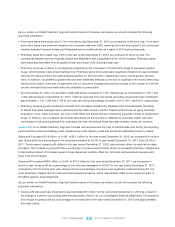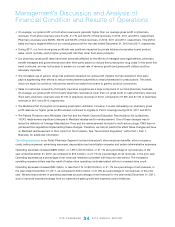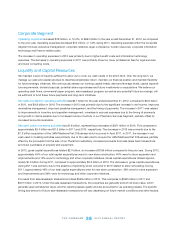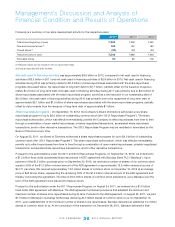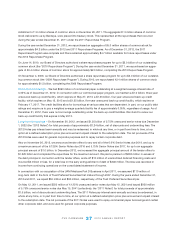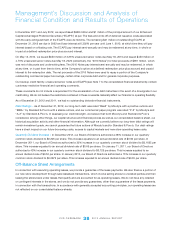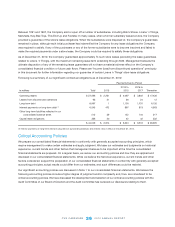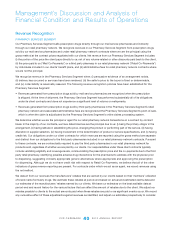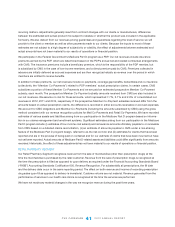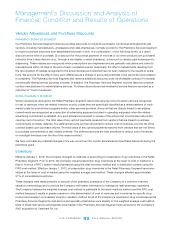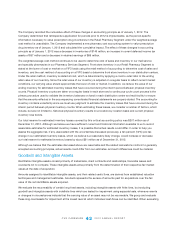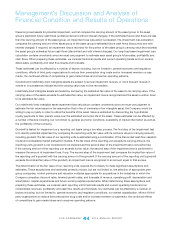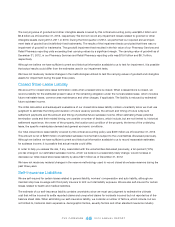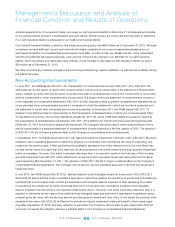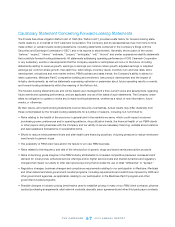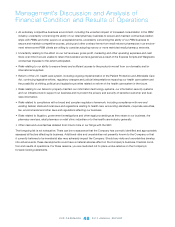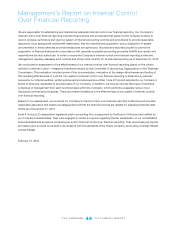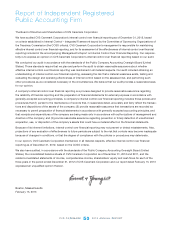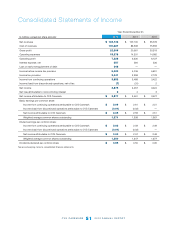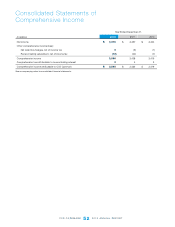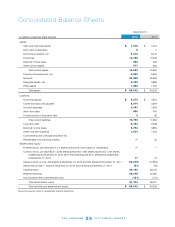CVS 2012 Annual Report Download - page 45
Download and view the complete annual report
Please find page 45 of the 2012 CVS annual report below. You can navigate through the pages in the report by either clicking on the pages listed below, or by using the keyword search tool below to find specific information within the annual report.CVS CAREMARK 2012 ANNUAL REPORT
43
The Company recorded the cumulative effect of these changes in accounting principle as of January 1, 2012. The
Company determined that retrospective application for periods prior to 2012 is impracticable, as the period-specific
information necessary to value prescription drug inventories in the Retail Pharmacy Segment under the weighted average
cost method is unavailable. The Company implemented a new pharmacy cost accounting system to value prescription
drug inventory as of January 1, 2012 and calculated the cumulative impact. The effect of these changes in accounting
principle as of January 1, 2012 was a decrease in inventories of $146 million, an increase in current deferred income tax
assets of $57 million and a decrease in retained earnings of $89 million.
The weighted average cost method continues to be used to determine cost of sales and inventory in our mail service
and specialty pharmacies in our Pharmacy Services Segment. Front store inventory in our Retail Pharmacy Segment is
stated at the lower of cost or market on a FIFO basis using the retail method of accounting to determine cost of sales and
inventory, and the cost method of accounting on a FIFO basis to determine front store inventory in our distribution centers.
Under the retail method, inventory is stated at cost, which is determined by applying a cost-to-retail ratio to the ending
retail value of our inventory. Since the retail value of our inventory is adjusted on a regular basis to reflect current market
conditions, our carrying value should approximate the lower of cost or market. In addition, we reduce the value of our
ending inventory for estimated inventory losses that have occurred during the interim period between physical inventory
counts. Physical inventory counts are taken on a regular basis in each store and a continuous cycle count process is the
primary procedure used to validate the inventory balances on hand in each distribution center and mail facility to ensure
that the amounts reflected in the accompanying consolidated financial statements are properly stated. The accounting for
inventory contains uncertainty since we must use judgment to estimate the inventory losses that have occurred during the
interim period between physical inventory counts. When estimating these losses, we consider a number of factors, which
include, but are not limited to, historical physical inventory results on a location-by-location basis and current physical
inventory loss trends.
Our total reserve for estimated inventory losses covered by this critical accounting policy was $207 million as of
December 31, 2012. Although we believe we have sufficient current and historical information available to us to record
reasonable estimates for estimated inventory losses, it is possible that actual results could differ. In order to help you
assesstheaggregaterisk,ifany,associatedwiththeuncertaintiesdiscussedpreviously,atenpercent(10%)pre-tax
change in our estimated inventory losses, which we believe is a reasonably likely change, would increase or decrease
our total reserve for estimated inventory losses by about $21 million as of December 31, 2012.
Although we believe that the estimates discussed above are reasonable and the related calculations conform to generally
accepted accounting principles, actual results could differ from our estimates, and such differences could be material.
Goodwill and Intangible Assets
Identifiable intangible assets consist primarily of trademarks, client contracts and relationships, favorable leases and
covenants not to compete. These intangible assets arise primarily from the determination of their respective fair market
values at the date of acquisition.
Amounts assigned to identifiable intangible assets, and their related useful lives, are derived from established valuation
techniques and management estimates. Goodwill represents the excess of amounts paid for acquisitions over the fair
value of the net identifiable assets acquired.
We evaluate the recoverability of certain long-lived assets, including intangible assets with finite lives, but excluding
goodwill and intangible assets with indefinite lives which are tested for impairment using separate tests, whenever events
or changes in circumstances indicate that the carrying value of an asset may not be recoverable. We group and evaluate
these long-lived assets for impairment at the lowest level at which individual cash flows can be identified. When evaluating


